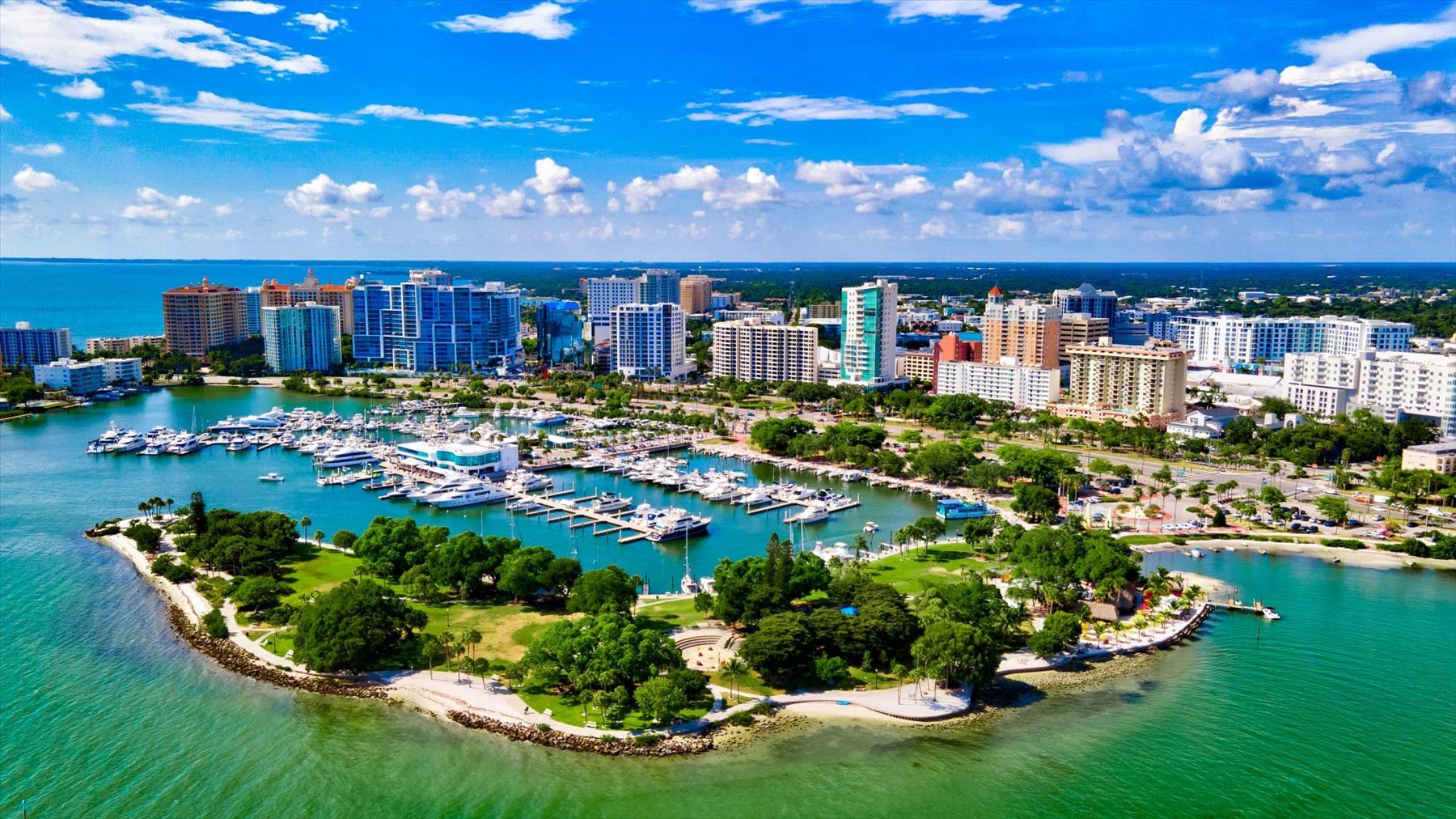Explore the architectural and historical significance of Sarasota’s waterfront homes, from early 20th-century mansions to modern luxury properties along Sarasota Bay
Sarasota’s waterfront homes along Sarasota Bay are more than scenic—they reflect the city’s architectural evolution and historical significance. From early 20th-century mansions to modern luxury properties, these homes embody Sarasota’s growth as a cultural and real estate hub on Florida’s Gulf Coast.
In the early 1900s, as Sarasota attracted wealthy investors and visionaries, grand waterfront estates emerged. Influenced by Mediterranean Revival and Spanish Colonial styles, these homes featured red-tiled roofs, stucco facades, and arched windows designed to embrace the bay views. The John and Mable Ringling Estate, built in the 1920s, remains an iconic example of this era, symbolizing Sarasota’s status as a winter retreat for the affluent. Developers like Owen Burns and John Ringling helped shape the city, favoring this architectural style, which continues to define Sarasota’s identity. Ringling’s Venetian mansion, Ca’ d’Zan, stands as a prime example of Mediterranean Revival grandeur along the bay.
As Sarasota evolved, so did its architectural landscape. Post-World War II, the Sarasota School of Architecture introduced mid-century modernism, emphasizing simplicity, functionality, and harmony with nature. Architects like Paul Rudolph and Ralph Twitchell designed homes with open floor plans, flat roofs, and large windows, blurring the boundaries between indoor and outdoor spaces. This movement, known as Sarasota Modern, became nationally recognized and left a lasting impact on the city’s architecture. Buildings like Jack West’s City Hall, constructed in 1966, reflect this enduring style.
By the late 20th and early 21st centuries, the demand for waterfront living surged, leading to the rise of modern luxury properties along Sarasota Bay. These homes showcase contemporary designs with clean lines, expansive glass facades, and seamless indoor-outdoor transitions. Many feature private docks, pools, and rooftop terraces, combining cutting-edge architecture with panoramic views of the bay.
Sarasota’s waterfront homes are not just residences; they have also served as gathering spaces for artists, intellectuals, and philanthropists, reflecting the city’s role as a cultural hub. The architectural blend of historic and modern styles along the bay mirrors Sarasota’s transformation from a quiet coastal town to a vibrant, thriving city known for its arts and luxury real estate.
Each era has left its mark on Sarasota Bay, creating a rich architectural legacy that continues to attract discerning buyers seeking a home that connects them to the city’s storied past and dynamic future.
Fun facts:
- Bidwell-Wood House (1882) in Pioneer Park is Sarasota’s oldest standing homestead. Few 1800s structures remain due to Florida storms and the lack of a firefighting service before 1911.
- Worth’s Block (now The Gator Club) was one of the first fireproof brick buildings on Main Street, built in 1912.
- Sarasota Opera House was built by A.B. Edwards in 1926 to promote Sarasota as a resort destination.
- Sarasota Municipal Auditorium (1938) is a rare example of Art Deco architecture in Sarasota County, featuring glass blocks to maximize natural light, designed by Chicago architects Thomas Reed and Clarence Martin.
- Elling Eide Center Research Library, designed by Sarasota architect Guy Peterson, is a modern architectural highlight, housing one of the largest collections of classical Chinese literature and rare manuscripts in the U.S.



Leave a Reply
You must be logged in to post a comment.